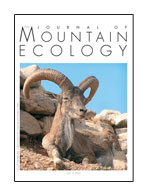|
PASTORAL PRACTICES AND
BIRD COMMUNITIES IN GRAN PARADISO NATIONALPARK: MANAGEMENT IMPLICATIONS
IN THE ALPS
Rolando A., Dondero F.,
Ciliento E. & Laiolo P.
Abstract - Alpine meadows are examples of semi-natural
habitats largely created and maintained through grazing of domestic
livestock. Deterioration of these habitats is widespread in the Alps,
due mainly to depopulation of high elevation rural areas and reduction
of stocking levels followed by a continue intensification of
agricultural practices in valley bottoms. In order to determine the
best management practices in terms of bird diversity maintenance and
bird species conservation, we examined the effects of pastoral
abandonment on the breeding avifauna of Gran Paradiso National Park
(nort-western Italian Alps). We tested for differences in mean species
diversity and overall bird abundance per sampling area among four
levels of increasing grazing impact, and examined the associations
among 32 bird species and local habitat structure, landscape, grazing
pressure and elevation. In general terms, the abandonment of pastures
seems to determine a prompt increase of bird diversity and density per
plot. However, while pastoral disuse leads to an overall increase in
local avian diversity and density, most of woodland species that
increase the diversity of abandoned habitats are quite ubiquitous and
with a secure conservation status. conversely, several grassland
species that here seem to be dependent upon grazing, have an
unfavourable conservation status in Europe. It must be stressed that at
landscape scale, grazing increases habitat diversity and, in turn, bird
diversity. In conclusion, in order to preserve threatened bird species
and to maintain a complex habitat mosaic and an high species diversity
at large environmental scale, extensive grazing should be maintained in
the Alps.
|


